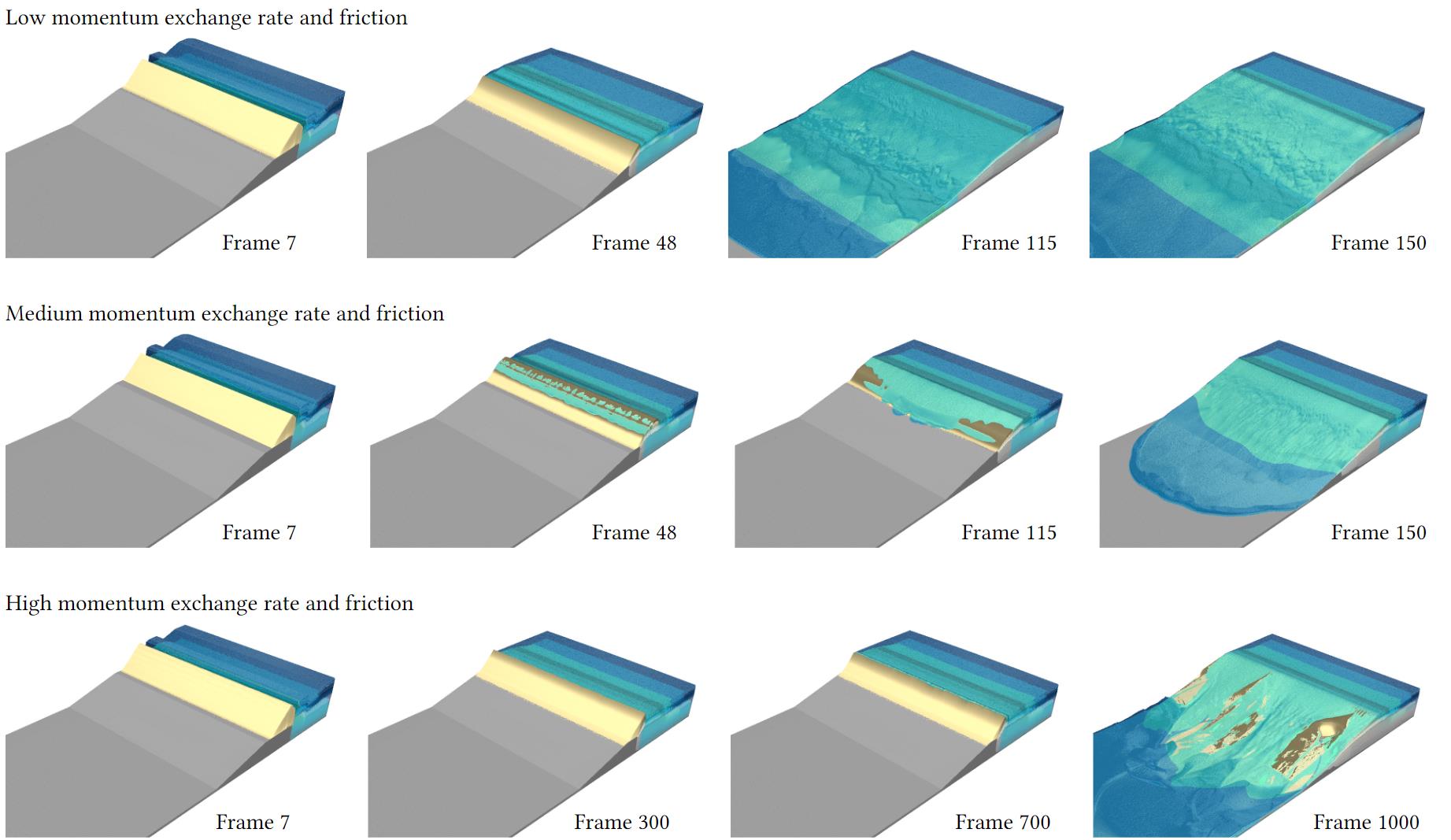Siggraph Asia 2023 (Conference Track)
Real-time Height-field Simulation of
Sand and Water Mixtures
Haozhe Su,
Siyu Zhang,
Zherong Pan,
Mridul Aanjaneya,
Xifeng Gao,
Kui Wu

The sand letters and logo are washed away by the flow.
Abstract
We propose a height-field-based real-time simulation method for sand and water mixtures. Inspired by the shallow-water assumption, our approach extends the governing equations to handle two-phase flows of sand and water using height fields. Our depth-integrated governing equations can model the elastoplastic behavior of sand, as well as sand-water-mixing phenomena such as friction, diffusion, saturation, and momentum exchange. We further propose an operator-splitting time integrator that is both GPU-friendly and stable under moderate time step sizes. We have evaluated our method on a set of benchmark scenarios involving large bodies of heterogeneous materials, where our GPU-based algorithm runs at real-time frame rates. Our method achieves a desirable trade-off between fidelity and performance, bringing an unprecedentedly immersive experience for real-time applications.
Paper [Preprint]
Video
Results

Sand is initialized in a cylinder and the simulation runs until the sand reaches a stable state. The final pose is shown in the sub-figures. With different saturation levels, the cohesive force that holds the sand together increases with a higher saturation level at first and then decreases when the sand is overly saturated, while the external frictional force keeps decreasing as a result of enlarging buoyancy.

To compare with the previous shallow sand method [Zhu et al . 2021], we demonstrate that using their frictional force only approach, the sand is either dispersed when the frictional coefficient is small (left) or stays still when the frictional coefficient is large (middle). Our internal elastoplastic force makes the sand be pushed forward while largely holding its shape (right).

The sand “SIGGRAPH” letters are washed away by the water. The top is with single-layer SWE where the movement of water on the top is impeded by the underneath sand, and the bottom is with two-layer SWEs.

Sand dams in the canyon flushed by the flow.

The water from the right slowly erodes the dam, which eventually breaks due to internal seepage erosion, and the landslide creates interesting textures in the debris flow. From top to bottom, by increasing momentum exchange rate and friction, various phenomena can be created, such as water leaking through the sand dam or sand behaving like a barrier before the collapse.

With the same runtime performance, our height-based sand model exhibits dynamics similar to MPM but with more details. Ours uses a 10242 height-based field, while MPM has around 8K particles with a 643 grid and 500K particles with a 2563 grid, respectively.